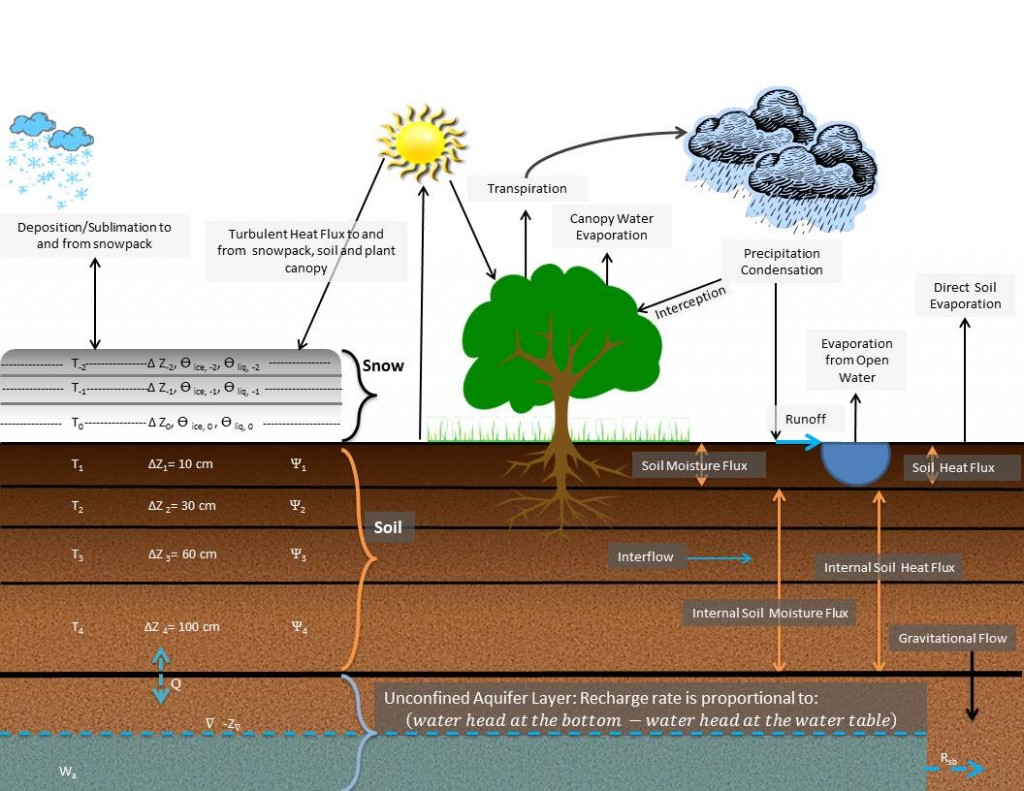Noah-MP was developed in order to facilitate climate predictions with physically based ensembles. Multi-physics options allows for isolation and analysis of specific parameter schemes ultimately allowing 4,584 combinations to be assessed. In addition, to better predict climate, Noah MP is capable of coupling NCEP Global Forecasting System (GFS) and Climate Forecasting System (CFS) and in the near future, coupling will improve weather predictions with the Weather Research and Forecasting (WRF) modeling system. Some flaws in Noah-LSM have also been modified to better represent several parameters including: surface layer radiation balances, snow depth, soil moisture and heat fluxes, leaf area-rainfall interaction, vegetation and canopy temperature distinction, soil column and drainage of soil, and runoff.
Zong-Liang Yang’s Land, Environment, and Atmospheric Dynamics group in the Jackson School of Geosciences at the University of Texas at Austin hopes to aid in transitioning the Noah Land Surface Model with Multi-Physics options to a community model.
Some New Features in Noah-MP
1. Major components include a 1-layer canopy; 3-layer snow; 4-layer soil
2. Subgrid scheme: semi-tile vegetation and bare soil (Niu et al. 2010a)
3. Interactive energy balance method to predict skin temperature of the canopy and snow/soil surface
4. Modified two-stream radiation transfer scheme to consider the 3-D structure of the canopy (Niu and Yang, 2004)
5. More realistic snow physics: a thin surface layer, liquid water retention and refreezing, and snowpack densification (Yang and Niu, 2003)
6. A TOPMODEL- based runoff scheme (Niu et al., 2005)
7. An unconfined aquifer interacting with soil (Niu et al., 2007)
8. More permeable frozen soil (Niu and Yang, 2006)
9. Ball-Berry stomatal resistance related to photosynthesis
10. A short-term leaf dynamic model. (Dickinson et al., 1998)
 |
Contact Information
| Zong-Liang Yang liang@jsg.utexas.edu Xitian Cai xtcai@utexas.edu |
© 2025 Jackson School of Geosciences, The University of Texas at Austin


